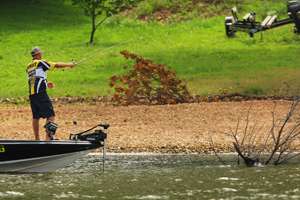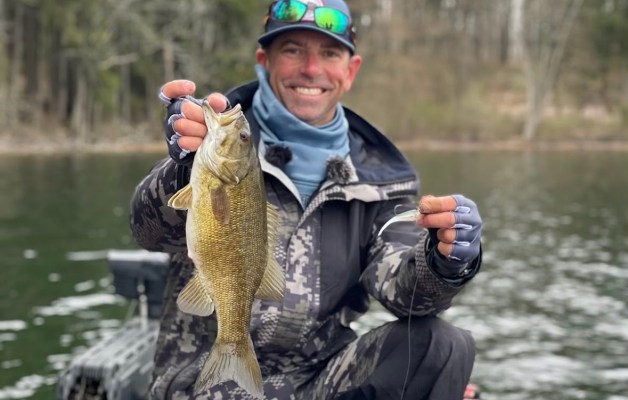
There are few sure things in life, much less in bass fishing. One day you catch them shallow; the next day they're deep. One day they want green pumpkin; they next day they ignore everything but junebug.
September is particularly vexing. Mostly, the days are still warm … even hot. But the nights and early mornings are noticeably cooler, sometimes downright chilly. The bass are in transition, just like the weather. Some are moving shallow as they chase bait up the creeks. Others are still holding near their summertime haunts or — worst of all — suspending on the main lake. It's enough to make you think of hunting or football.
Luckily, Elite Series angler Jeff Kriet has an answer for tough transition bass that's both fun and productive. It's not something that the Ardmore, Okla., pro necessarily expects to last all day long when you're on the water, but he's confident enough in it that he thinks passing it up is just plain foolish.
He's talking about early morning topwater fishing during the fall transition period, and he says it's one of the most dependable patterns you'll ever fish.
"Honestly, I'd just about rather go to the dentist than throw a topwater most of the time," Kriet says, "but these fish are just too easy to pass up at this time of year."
Kriet thinks it's just as much about the shortening days as it is falling water temperatures, but when the weather starts to change he leaves the summertime holding areas and moves shallower, first to the main lake points then gradually further back into the creeks as the season moves along.
"Bait is the key right now," he says. "When you find it, you've found the bass."
Early in the fall transition period, they'll be close to the main lake. Kriet likes to target points with topwaters like buzzbaits, poppers and stickbaits. The buzzbait is his favorite.
"I like a 1/4-ounce War Eagle buzzbait in white. It's got a small profile, and the small blade creates just the right action," he says. "A larger bait chugs too much right now and doesn't match up with the baitfish quite as well. I use the bigger baits in the spring when I want a slower moving bait. Right now, I like the small blade and the fact that it works really well on a faster retrieve. I want to cover a lot of water."
Kriet throws the buzzbait on 15- to 20-pound-test High Seas monofilament or 50-pound-test High Seas braid. He throws it on a Falcon Swim Jig rod because it has a forgiving tip, and he spools the line onto an Abu Garcia Revo with a 7:1 gear ratio.
When he opts for a popper, he likes the Sebile Splasher, especially when he can cast it around vegetation or single logs along the bank.
"I call it 'trash' fishing," he says, "but other guys call it junk fishing — you know, casting at a wide variety of targets with four or five different baits until you scratch out a decent catch."
Kriet's sure thing is best during the first couple of hours in the morning, but he has seen it last all day. "Push it as long as you can," he says, noting how tough September bassing can be. "If I stop getting bit on top, I'll pick up a square-billed crankbait or flipping stick and try something else, but if I can catch three or four on top early, that just makes the rest of my day easier."
And the pattern draws quality fish, too. Buzzbaits and other topwaters are big fish lures. Casting them at this time of year is not just a good way to catch a few bass, but it's a common way to win a tournament or catch the best fish of the season.
The pattern should hold well into the fall. The only thing that will change is how far off the main lake you'll need to go to find the bait and the bass. Over much of the country, Kriet expects the fish to be all the way in the backs of the creeks by sometime in October. But until they fully reverse their fall migration, he expects to take some of them with topwaters in the early morning.




